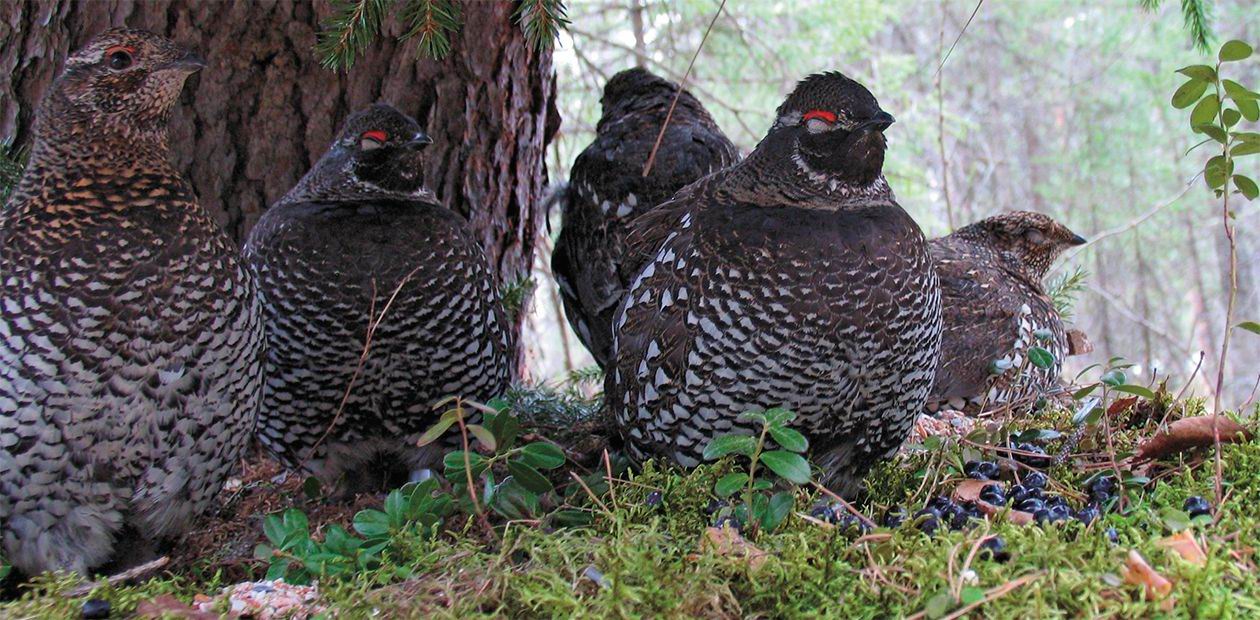“Noah’s Ark” for the Siberian Grouse
One of the ways to retain biological diversity is captive breeding of animals and creation of artificial populations, which may then be used for restoring the populations of these animals in wildlife. Elaboration of the technologies for keeping, breeding, and releasing animals into wildlife is especially topical for the rare and endangered species. Among these species is the Siberian Grouse – a mysterious inhabitant of the Far East taiga
A kind of a “Noah’s Arc” – a large complex of open-air cages housing rare (and not so rare) avian species – always arouses a strong interest of the visitors, from local schoolchildren to eminent foreign scientists, in the Karasuk Research Station with the Institute of Systematics and Ecology of Animals,Siberian Branch of the Russian Academy of Sciences. There, researchers have an opportunity to study the specific features in the biology of these species and elaborate various tricks for their keeping and breeding. All research at the nursery is conducted in close collaboration with the Novosibirsk Zoo, which not only supplies the main animal stock, but also provides most of the funding for these rather pricey activities.
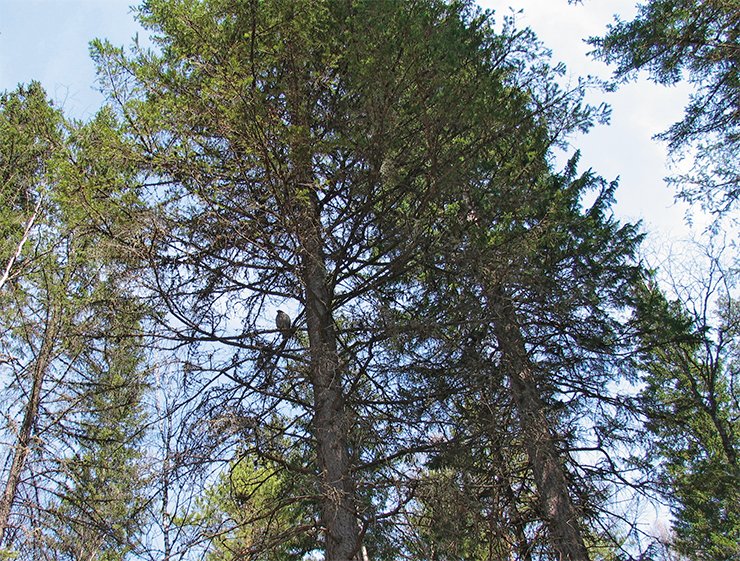
The weight of an adult bird reaches 650—700 g. Their calm behavior, taciturnity, and protective feather coloration hide them in tree canopy. Siberian Grouses are polygamous, and males do not participate in brood breeding. Female lays seven to eight eggs into a nest on the ground. The brood keeps with the mother until fall, when the nestlings become completely independent.
The Siberian Grouse is very sensitive to changes in the habitat associated with forest management, especially, to large-scale clear cuttings. Therefore, its current distribution range, comprising three small isolated areas, is declining steadily. This species is on the endangered species lists in the Russian Federation and in China and on the Red List of Threatened Species of the International Union for Conservation of Nature (IUCN)
A matter of special pride is the population of the Siberian Grouse, a rare taiga species of tetraonids, created at the Station and successfully propagating. This open-air cage population is the only one in the world, although a lot of attempts have been made, both in Russia and abroad, to breed the Siberian Grouse in captivity.
Tame as a Siberian Grouse
The problems in keeping Siberian Grouses in captivity are first and foremost associated with their narrow feeding specialization. In wildlife, these birds feed mainly on spruce and larch needles all year round, enriching their diet with seasonal feeds, such as berries and plant seeds as well as a small amount of fresh foliage and animal feed, such as arthropods.
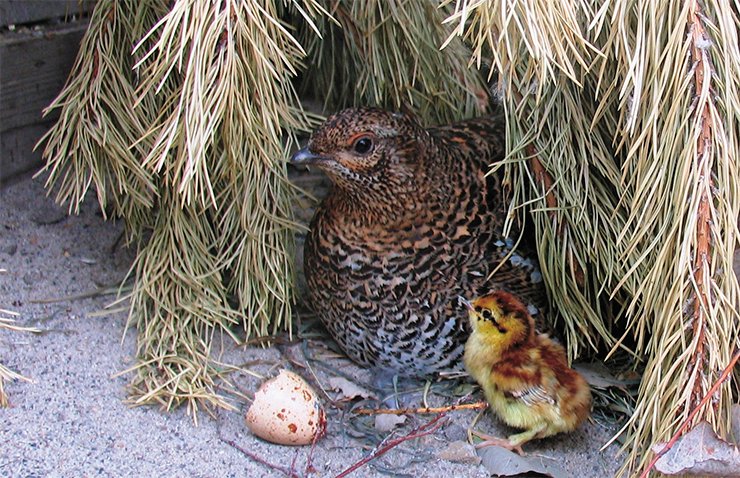
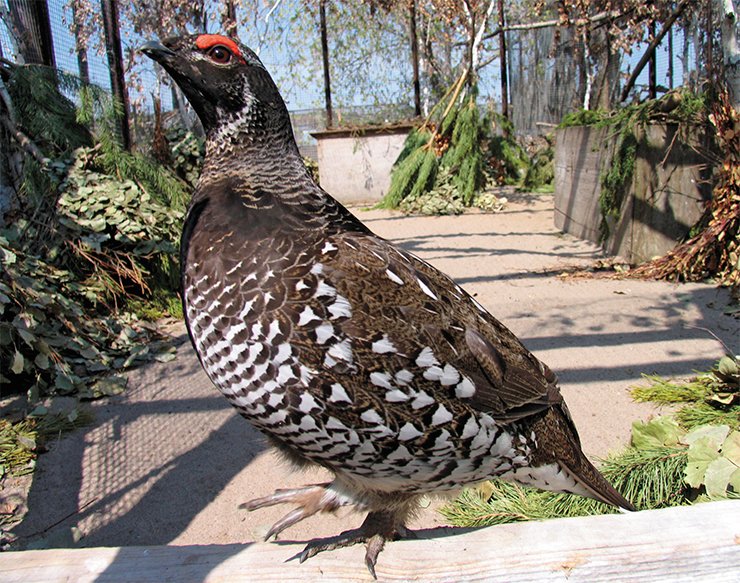
So that the Siberian Grouses bred in the nursery will not lose their ability to feed on natural diet, they are provided with natural feeds – spruce and larch needles on branches and various berries – along with the traditional commercial food (ready-mixed feed, grain mixture, mealworms, and so on). Fed this diet, the Siberian Grouses of the open-air-cage population successfully live and reproduce already in the 12th to 15th generation.
Another difficulty in breeding Siberian Grouses in captivity derives from their extremely high susceptibility to various infectious diseases affecting wild and domestic birds, which is not surprising, given the relatively “sterile” conditions this taiga species has enjoyed over the centuries.
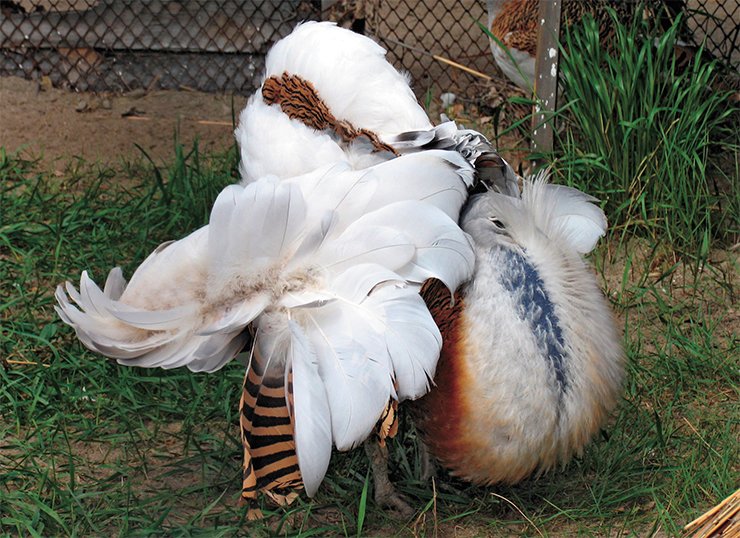
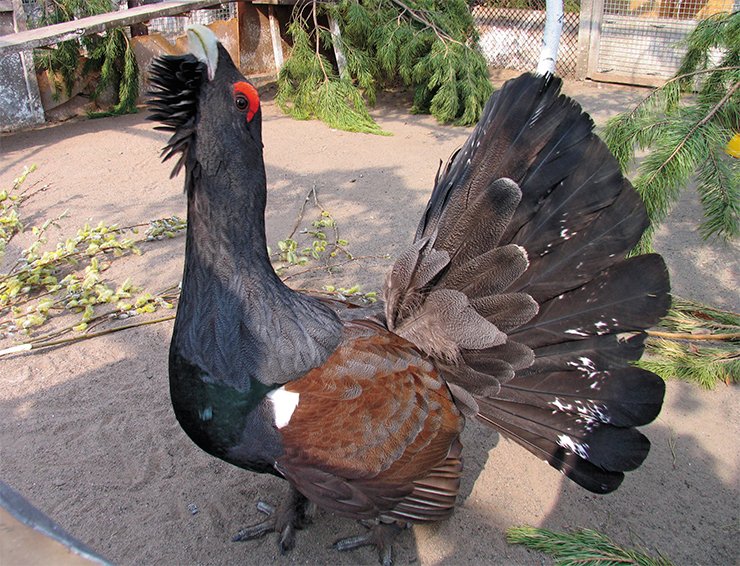
For almost half a century, scientists of different fields – soil scientists, botanists, parasitologists, ichthyologists, entomologists, ornithologists, and others – have used this research station as a field and experimental base for studying the forest–steppe ecosystems and the human impact on them. The open-air cage complex, founded in the 1980s, keeps and breeds various avian species, objects of basic and applied research.
The Karasuk breeding facility is one of the few facilities on the territory of the former USSR where the Golden Eagle, a large and powerful bird of prey, reproduces in captivity and rare crane species, such as the Great Bustard, Houbara Bustard, and Little Bustard are kept.
Neighboring cages are occupied by the species currently common for Russia: the Western Capercaillie, a dweller of pine forests, and the Black Grouse, which prefers forest openings and birch outliers. Living nearby are “foreigners” from countries of near and far abroad, namely, Himalayan Snowcocks and Ruffed Grouses. Of special interest is the Siberian Grouse from the Russian Far East, a national treasure of Russia, like the Amur Tiger and Amur Leopard. All the species of tetraonids and Snowcocks successfully reproduce in the nursery.
At the Karasuk Research Station, students from Novosibirsk State University have practical training courses in zoology and schoolchildren from the town of Karasuk get supplementary ecological education. For a number of years, the open-air cage complex with its unique dwellers has contributed to educating local residents and propagating environment-oriented knowledge – over a thousand visitors come there every year
The most amazing specific feature of the Siberian Grouse, distinguishing it from the other tetraonid species, is the absence of any fear of humans. When these feral birds encounter people, they do not fly away but rather freeze for a short time. If they are not further disturbed, the birds will relax and continue with their interrupted activities: feeding, cleaning themselves, and resting right in front of your eyes – and the most curious individuals will watch with interest what you are doing. Being disturbed several times, Siberian Grouses will merely settle somewhat higher on the branches of nearby trees, where they will feel perfectly safe.
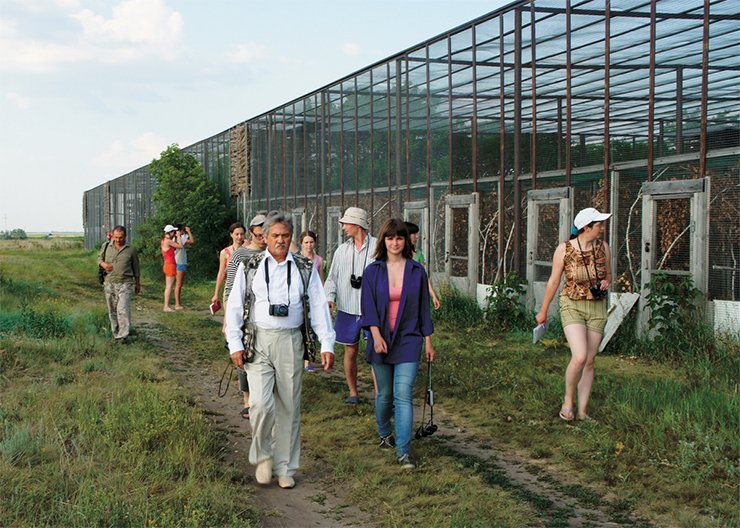
This unique specific feature in the behavior of Siberian Grouses, unexplainable from a scientific standpoint, has done them a bad turn: when people come, these birds disappear. Evidently, preservation of the Siberian Grouse as a species far more depends on humans as compared with other wild animals. On the other hand, such “tolerance” makes it possible to domesticate the Siberian Grouse and even to make it a real “neighbor” to humans, provided certainly that the latter behave themselves.
Planned running wild
A logical step in preservation of rare species is getting individuals grown in captivity back to wildlife. This particular experiment began several years ago at the Karasuk Research Station.
In the Maslyanino District of the Novosibirsk Oblast, a plot in a forest appropriate for the dwelling of this species was selected. On the Siberian scale, this area is located within a “walking distance” from both the research station (600 km) and the Institute of Systematics and Ecology of Animals (200 km). Since 2004, about 200 Siberian Grouses, aged from 4 months to 3 years, have been released from here. Most birds were released in April, before the beginning of the reproduction season, and the rest of them, at the beginning of September. From the Karasuk nursery, the birds were transported by cars. They tried to ship the birds at night and to release them in the morning so that they could get acquainted with the new environment before it got dark.
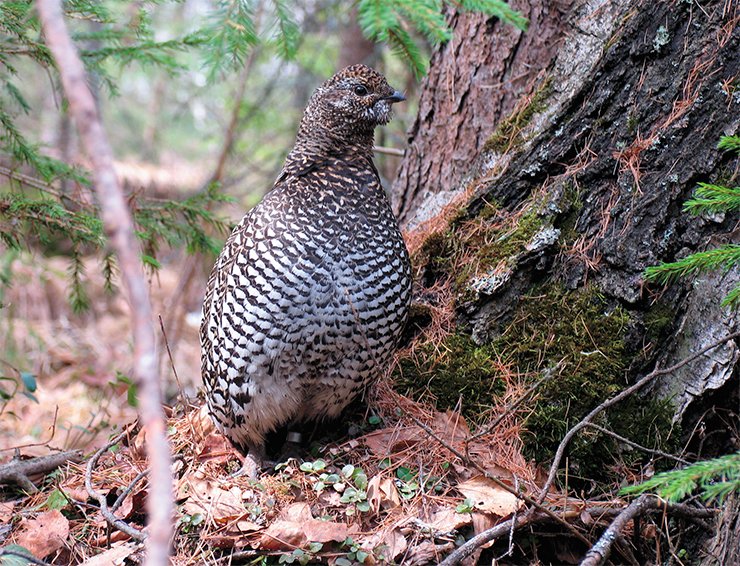
Once the birds occurred at the feeding site, some of them immediately flew away to the trees located at a distance of 150—200 meters. Others stayed on the site till the evening, resting after the long trip and having a familiar snack. However, as early as by the evening, all the birds left the site where they had been released and started to explore the taiga.
Note that Siberian Grouses are rather sluggish and taciturn and, therefore, are not easily detectable in wildlife. Unless the males bell, they are silent, and the females cluck gently from time to time. You can hear these birds only if you are very near to them. Siberian Grouses may give themselves away by wing flapping; a flying bird often urges its neighbors, unnoticed before this, to fly off, too.
For several days after the release, researchers watched the birds’ behavior and migration. Later, information about the Siberian Grouse occurrence came from the staff of the Maslyanino nature protection service and local population. Local residents were informed about the experiment by regional mass media and an action team of schoolchildren, winners of a Novosibirsk regional competition of ecological projects.
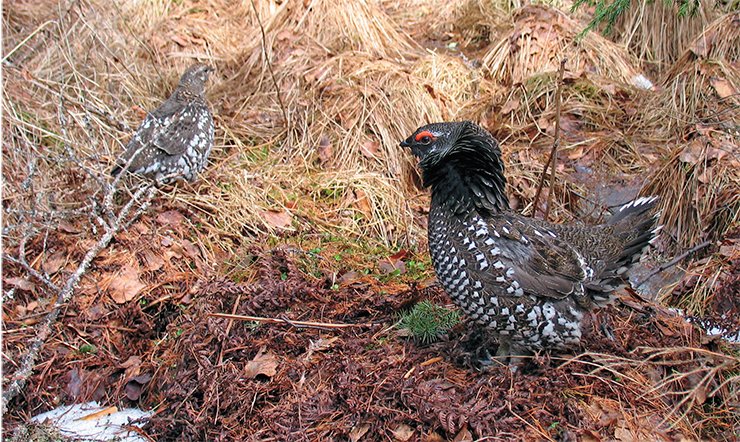
As a rule, the released Siberian Grouses were seen on taiga trails and sometimes on the sides of asphalt roads; dozens of such encounters have been recorded. Some individuals have been found at large distances, up to 30 km from the “reference point.” The absolute record was 90 km: one female was seen in Novosibirsk Akademgorodok by Academician I. F. Zhimulev, according to his oral report. Typically, one or two birds displayed such behavior, although a female with a brood of six nestlings was encountered at a distance of 20 km from the release site. Four cases of death were recorded, including that by a poacher and a bird of prey.
Born in an open-air cage
The Siberian Grouse in wildlife is regarded as a sedentary species. When getting acquainted with the territory, juveniles usually do not depart farther than several kilometers from the nesting site; the seasonal nomadic migrations of the species are also insignificant. However, the birds bred in open-air cages and released into wildlife behave in another manner: they fly away to considerably longer distances. Presumably, it is difficult for the Siberian Grouses grown in captivity to orient themselves in an unfamiliar space; therefore, a searching behavior becomes dominant.
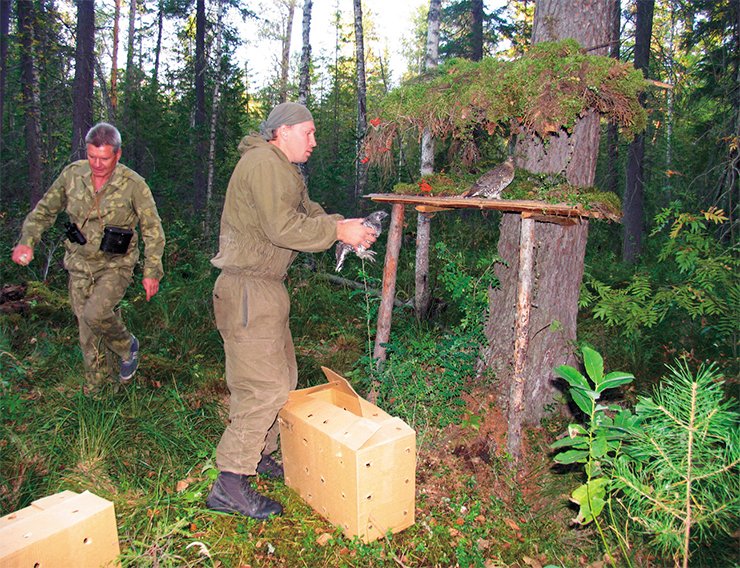
It became clear that it would be easier to set a sedentary habit, characteristic of the Siberian Grouse in wildlife, in the progeny of caged birds rather than in the adult individuals; moreover, such nestlings should be hatched directly in their new “residence.”
To verify this assumption, open-air cages were constructed in taiga in 2010; in the spring, adult individuals were placed there. In these cages, they successfully mated, laid eggs, brood, and hatched nestlings, which were released with females a day or two later. Observation of the birds revealed that for a month the families did not go far from the initial site.
This way of introduction may appear the most successful. Attempts to release the caged underyearlings of the Siberian Grouse in the fall were not quite successful, since in this case the birds were drawn to human dwellings. As for the 2—3 years old individuals, it was certainly much more difficult for them to adapt to this drastic change in the life style, in contrast to the yearlings or juveniles.
The data on occurrence of the Siberian Grouse in the Maslyanino Region (Novosibirsk oblast) demonstrate that the birds raised in captivity are able not only to survive in wildlife during an annual life cycle, but also to reproduce. In the future, it is proposed to use telemetry to obtain more reliable information about the migration of these birds.
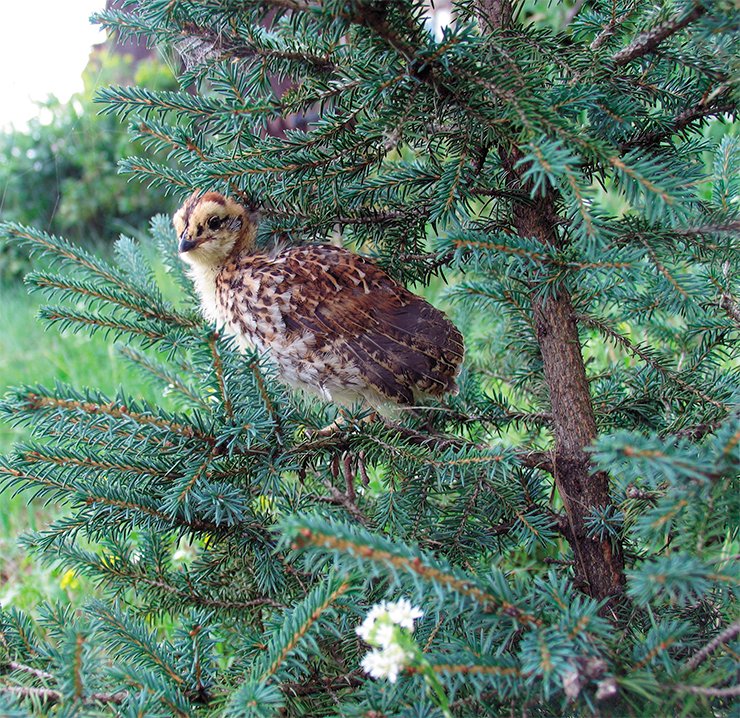
Certainly, researchers believe that a new, “reserve” population of Siberian Grouse will eventually be created in the south of West Siberia. Encouraging this belief is the support provided by the regional administration, which assists in preservation of rare birds.
The results of the experiment on introducing the Siberian Grouse is of paramount importance for further development and implementation of the strategy and tactics for preservation of this species in wildlife. The current integrated research on preservation of the Siberian Grouse is conducted under the Eurasian Regional Association of Zoos and Aquariums (EARAZA). In addition to the Institute of Systematics and Ecology of Animals and Novosibirsk Zoo, involved in the studies of this species are the Yakutian Zoo Orto-Doidu and the Institute of Biological Problems of Cryolithozone (Siberian Branch, Russian Academy of Sciences, Yakutsk, Russia) are. A working team has been created to elaborate the proposals and implement particular activities on preserving, restoring, and increasing the Siberian Grouse population.
In addition, the experience in returning the Siberian Grouse individuals raised in captivity to wildlife can be used when optimizing the introduction methods for other tetraonid species.
References
Shilo V. A., Klimova S. N. Jeksperiment po sozdaniju zapadnosibirskoj rezervnoj populjacii dikushi (Falcipennis falcipennis) // Vestnik Tomskogo gosudarstvennogo univer¬siteta. Biologija. 2010. № 4 (12). S. 60—67.
Andreev A. V., Hafner F., Klaus S., Gossow H. Displaying behaviour and mating system in the Siberian Spruce Grouse (Falcipennis falcipennis Hartlaub, 1855) // J. Ornitol. 2001. Vol. 142. P. 404—424.
Photos by the courtesy of the author and I L. Voloshin (Institute of Systematics and Ecology of Animals, SB RAS, Novosibirsk)


